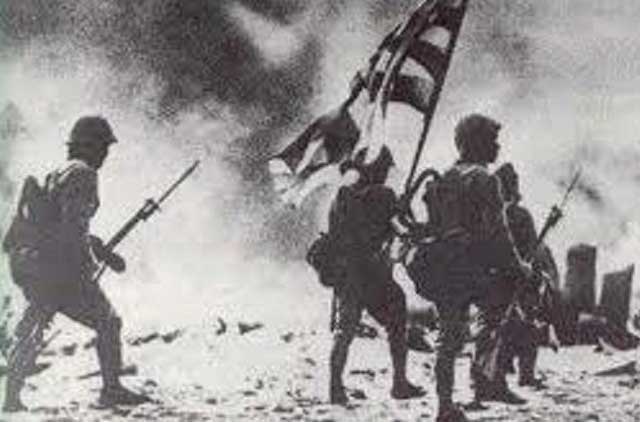The Solomon Islands Campaign
Today, you don’t hear much about the Solomon Islands in the South Pacific. They’re a popular tourist destination, but otherwise they aren't at the top of most people's minds. During the early 1940s, though, the situation was very different. The Solomon Islands quickly became a focal point of the War in the Pacific after the outbreak of war between the United States and Japan.
The Japanese Advance

Japanese Invasion of Rabaul in 1942
Within a few months of the attack on Pearl Harbor, on December 7, 1941 and after securing its footing in Rabaul and the Philippines, the Japanese set their sights on the Solomon Islands. The intention was to use the islands as a strategic point against the United States and stake a claim in the South Pacific to sever supply lines between the US and Australia. Ultimately, Japan wanted to completely remove Australia and New Zealand from the war. While the Imperial Japanese Navy wanted to invade Australia, the army deemed such an undertaking impossible.
In April of 1942, the Japanese occupation of the Solomon Islands began with the launching of Operation Mo. Japan divided its forces between Port Moresby in New Guinea and Tulagi in the southern Solomons. Though the Japanese invasion of Port Moresby was repelled at the Battle of the Coral Sea, they successfully captured Tulagi.
The Allies Respond
To counter the threats against Australia, Allied forces increased their available troops and aircraft with the goal of freeing recapturing the Philippines. Two proposals for how to retake Tulagi were floated, the first coming from General Douglas MacArthur, who proposed an offensive maneuver to retake Rabaul. Opposite MacArthur, the US Navy advocated a less aggressive approach, starting with New Guinea and moving up through the Solomon Islands.
The Start of the Solomon Islands Campaign
Eventually, Admiral Ernest King and the US Army Chief of Staff General George C. Marshall decided on a three-part plan that started with the capture of the island of Tulagi. From there, Allied naval forces would advance along the coast of New Guinea leading to the third and final task: the capture of Rabaul. The Solomon Islands Campaign launched with the first task of this three-part plan and started on August 7th, 1942 when US Marines landed on Guadalcanal, one of the major islands of the Solomons. These landings launched Japan and the Allies into the Guadalcanal Campaign, which ran until February 9th, 1943 and ended in an Allied victory.
The Beginning of the End for Japan
The American victory at Guadalcanal was the start of the Allied offensive in the Pacific Theater, but the US and Japan battled for several additional islands throughout the central and northern Solomon Islands, including New Georgia and Bougainville. This series of naval and land battles led to the Bougainville Campaign, which lasted from November 1st, 1943 to the end of World War II.
The Solomon Islands Campaign ended in an Allied victory, ending Japan’s hopes of cutting off Australia, and paving the way for the Allied liberation of the Philippines.








